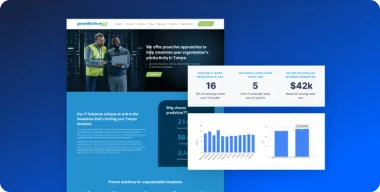According to the Global Web Index, 40% of browsers around the world have installed an ad blocker which is a rise of 28% from mid 2015. Towards the end of 2015, there were at least 198 million browsers around the globe that had ad blockers installed. Apple’s high-profile entry into it took ad blocking to a whole other level.
Understanding ad blockers
Ad blocker is the general term used to refer to any type of hardware or software that removes the ads from a web page. It is typically seen as browser extensions like AdBlock or AdBlock Plus, that are easily installed on popular browsers like Mozilla Firefox and Google Chrome. Blockers are also made to block ads on mobile devices.
The blocking software is usually very precise but it does not block anything by default, they seeks out large popular filter lists like Easy List. Most ads are served via ad networks or ad exchanges so blocking them is as simple as blocking the domains of the ad servers. Blockers can target video ads and Taboola and Outbrain sponsored content widgets as well as display ads. Even native ads can be captured with blockers.
Browsers were quick and happy to embrace it for the following benefits:
- Improved performance: On average, a page has at least dozens of ad tags. Ad providers are typically built without regard to performance. When all the images, videos, tags and other ads are blocked, the performance is so much better with data loading at much higher speeds.
- Privacy: The majority of ad networks and tracking systems such as Google Analytics gather information about user behavior and habits and the pages visited, which raises concerns about privacy. Ad blockers prevent this and ensure privacy.
- Security: The largest part of online advertising is still the display or banner ecosystem. Vendors exploit it with animation, videos and other elements to create captivating ads. Ad networks have permitted third-party Flash and JavaScript files to run in ad slots to let these ads run. The problem is that this also allows malicious code to run, which puts browsers at risk of viruses and malware on a large scale.
- Better browsing experience: Ads have evolved from banners to rich media such as videos in between paragraphs or outstream videos and banners layered on images known as in-image banners. They interrupt and annoy browsers and are believed to be one reason browsers were so readily embraced.
What ad blocking means to advertisers and publishers
Advertisers won’t be as affected as publishers. They still have a lot of website traffic and a lot of other advertising channels such as on social media. More content is being put on closed platforms and apps so advertising will become increasingly integrated and more difficult to remove.
Why it is different for publishers?
It’s different for publishers who lose ad revenue when their target audience blocks their ads. There are options like creating sponsored content and turning to first-party ads, but these are time consuming and costly. These are also options that would work for prominent publishers with a large audience that would interest advertisers. Long-tail and mid-size publishers do not have the scale or infrastructure for these options to be viable.
Some publishers have given paywalls a go but have faced the challenge of a sharp decrease in the number of users who are willing to pay up. Also, this option works only for premium, niche or exclusive content. Another solution that publishers have tried is sending messages to users who have installed ad blockers requesting them to whitelist their websites. This has not worked either. In fact, there was more blocking because those who hadn’t installed blockers became keen to do so.
Publishers are also trying to improve the experience for users with micropayments such as with Blendle and also Facebook Instant Articles. Although there is no concrete revenue that resulted from the move.
Possible solutions
Publishers continue to look for technical solutions around ad blocking. One option is to keep changing server-side ad rendering and domain names. This would be a very significant change and it would make it necessary for a standardized API to be set up so that publishing systems could seamlessly work with ad networks to render ads and content in one pass.
Where it’s heading
There will also most likely be units that are more streamlined and non-intrusive that will be more content driven. Privacy will also be a focus to put users at ease about how their data is processed. Advertisers will be encourage to get more creative with content, to come up with inspiring and entertaining ads. Also, banners are not going anywhere, however, outstream videos and in-image rich media will soon be a thing of the past.




